The journey from flax crop in the field to finished linen cloth (even before washing and bleaching) has many steps. The transformation from a retted sheath of flax, from the field to flax fibres ready for warp-weighted loom weaving is remarkable. We start with scratchy and straw-like and end with floppy and silky.
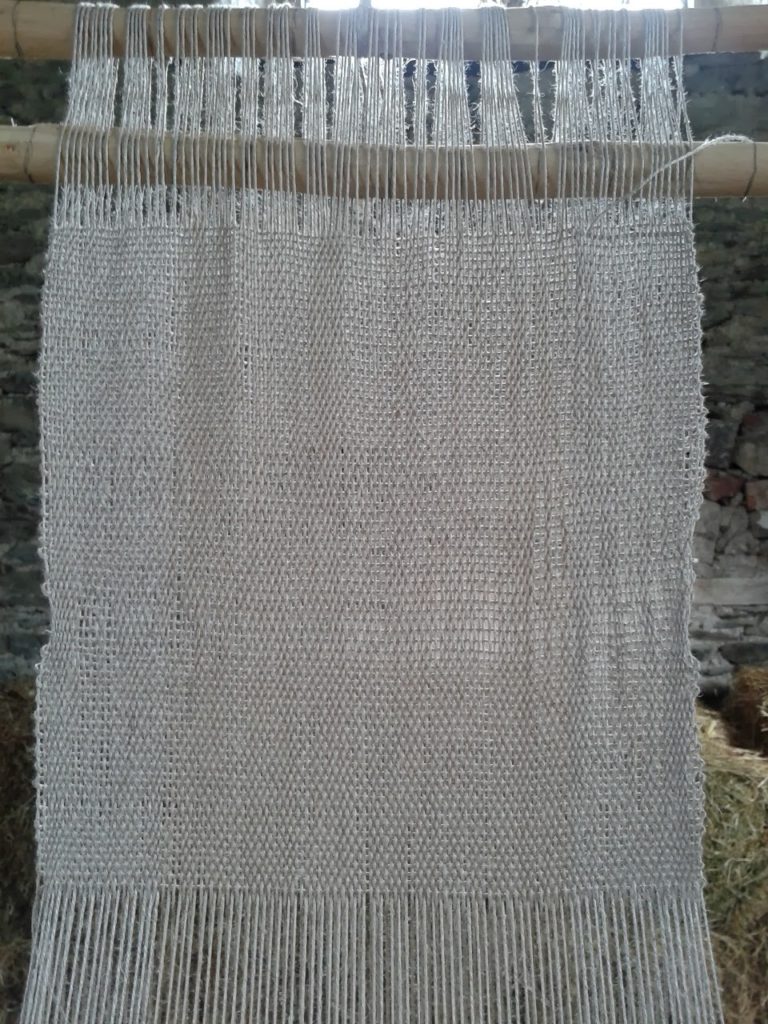
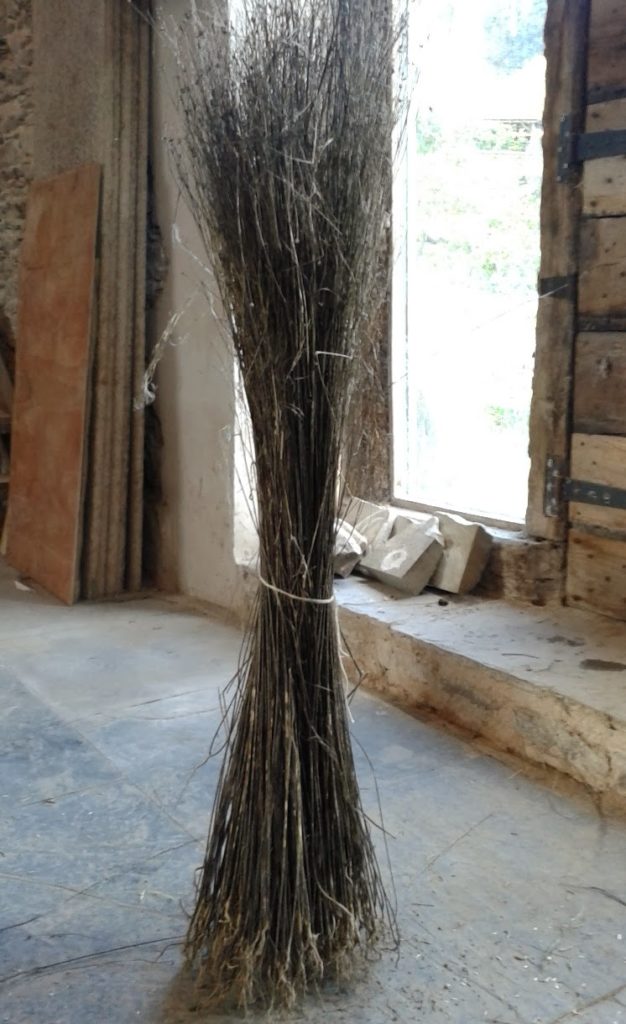
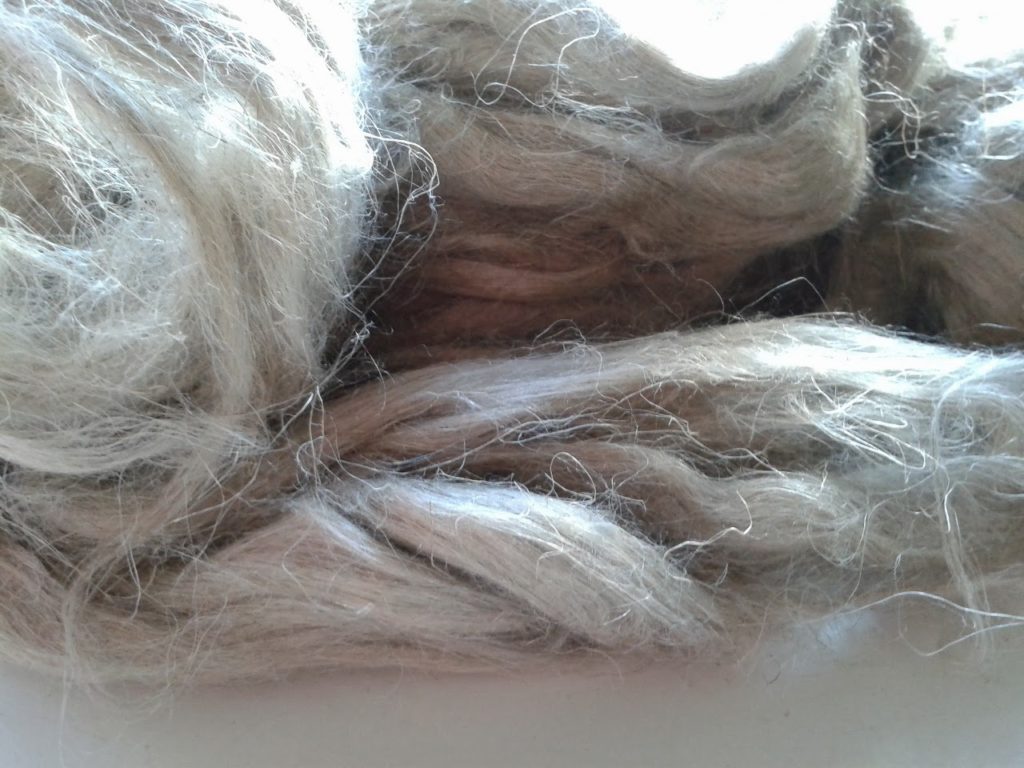
It takes time to ret the flax after harvesting, and flax processing is a lengthy process too. I started this journey learning about flax processing and warp-weighted loom weaving, from start to finish, at a weekend workshop in Wales.
Related: Warp-weighted linen weaving and flax processing
I’m a fan of wool, but it’s quite a transformation, nevertheless. Flax fibres can be hard to handle, which is, I guess, why they have traditionally been artfully attached to and spun from a stick (distaff), at least in this part of the world.
I have spun flax from a hank of fibres and managed fine, but the fibres easily get matted in the hand. The hank of fibres in the photo above has been handed round school groups as part of only three ‘outreach’ events for work so far, and it is already looking a little roughed up. Like wool, the fibres need to be organised and teased apart. So, over to Shirley of Slender Thread to show us how.
Preparing the Fibres
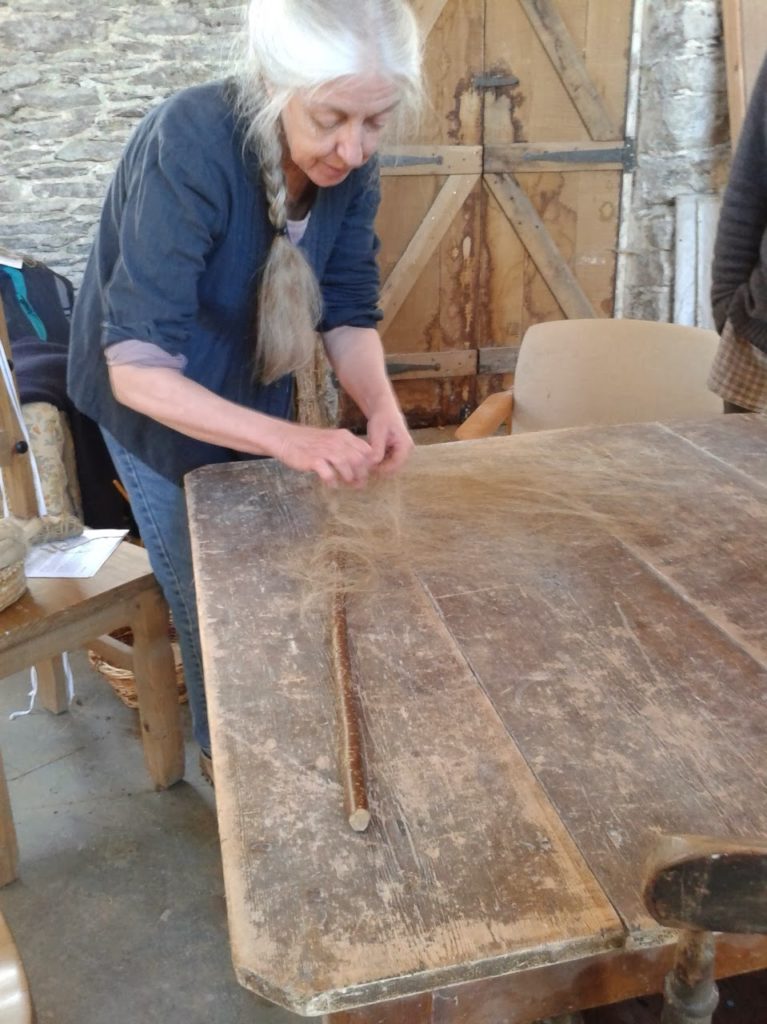
The fibres need to be secured at one end of the distaff then fanned out, and there’s a knack to it. With our distaffs ‘dressed’, when we stood up them up, they looked like white-haired witches on sticks. With ribbons in their hair to keep it in place.
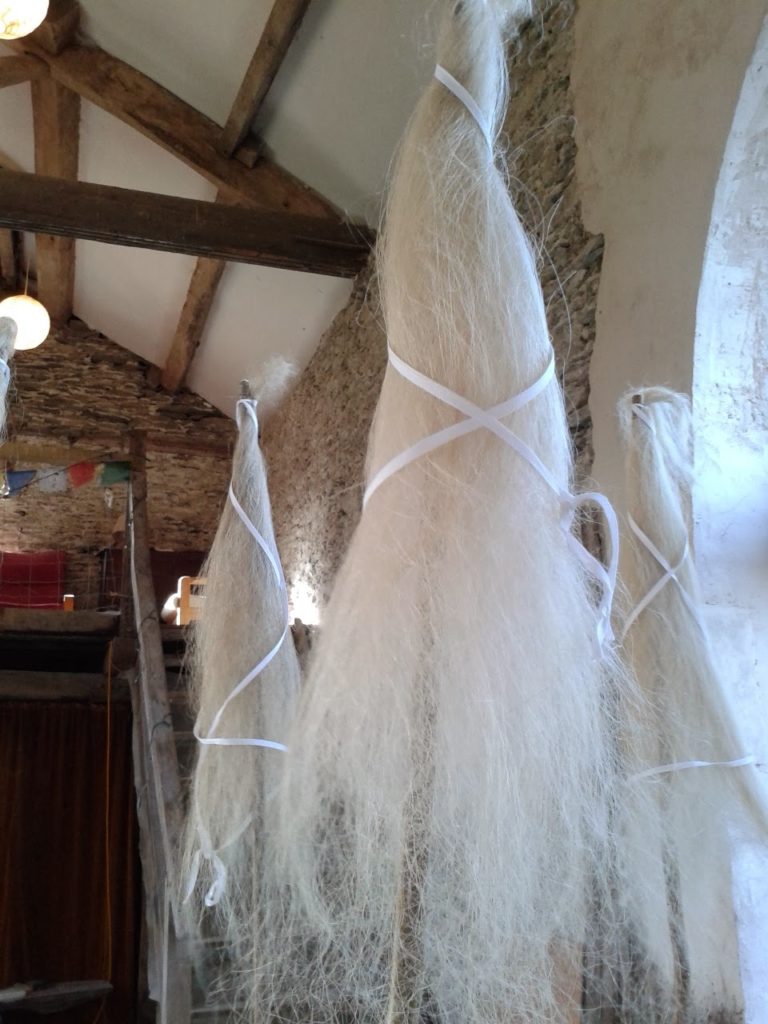
If you can imagine the many medieval paintings that show spinners with their distaff and spindle, they are often outdoors, spinning as they walk to the fields. The ribbons keep the fibres in place, just like ribbons in the hair keep hair in place. Even when spinning at a wheel, a few ‘stays’ wouldn’t go amiss.
So, with our fibres in place, we could spin from the distaff:
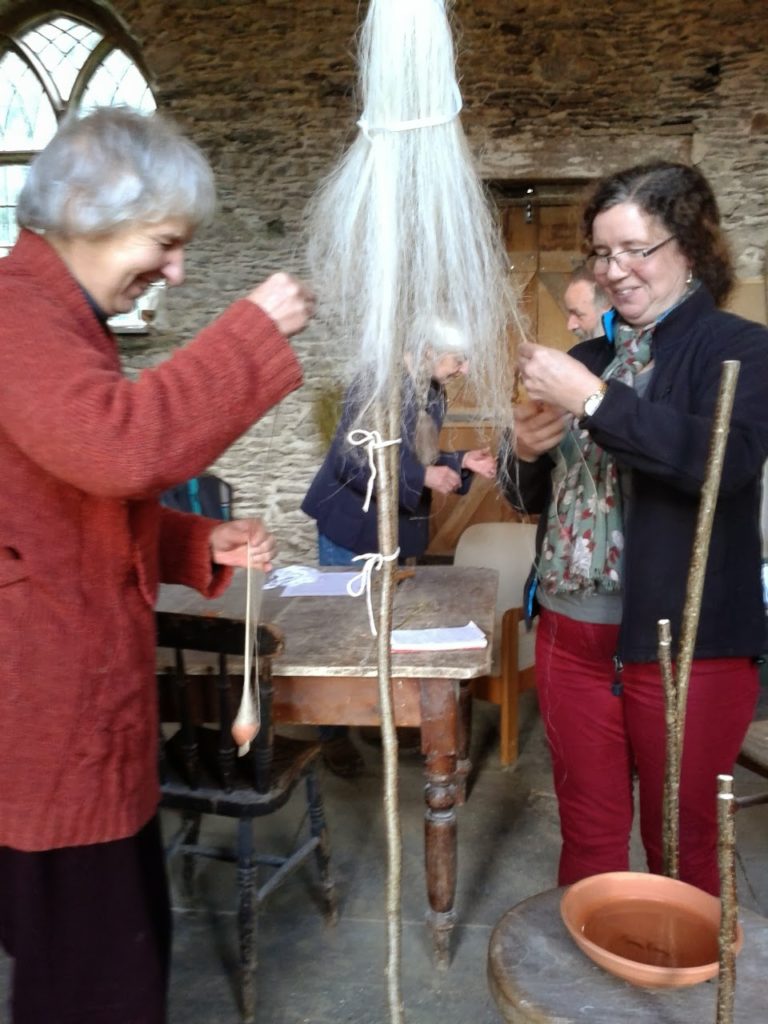
I would like to say ‘and then with our yards of hand-spun yarn we turned to weaving’. But no, our novice attempts would never have produced enough yarn for a piece of cloth in that time. The warp-weighed loom takes a lot of yarn, and learning to spin takes time.
Warp-weighted Loom Weaving
Ancient Looms
From decorated pots and vases of Bronze Age Greece we know that they have been around for a long time, and we know what they looked like. They looked more or less like this, although rather than free-standing like this loom (made for transporting round to workshops), the posts would have been set into the ground.
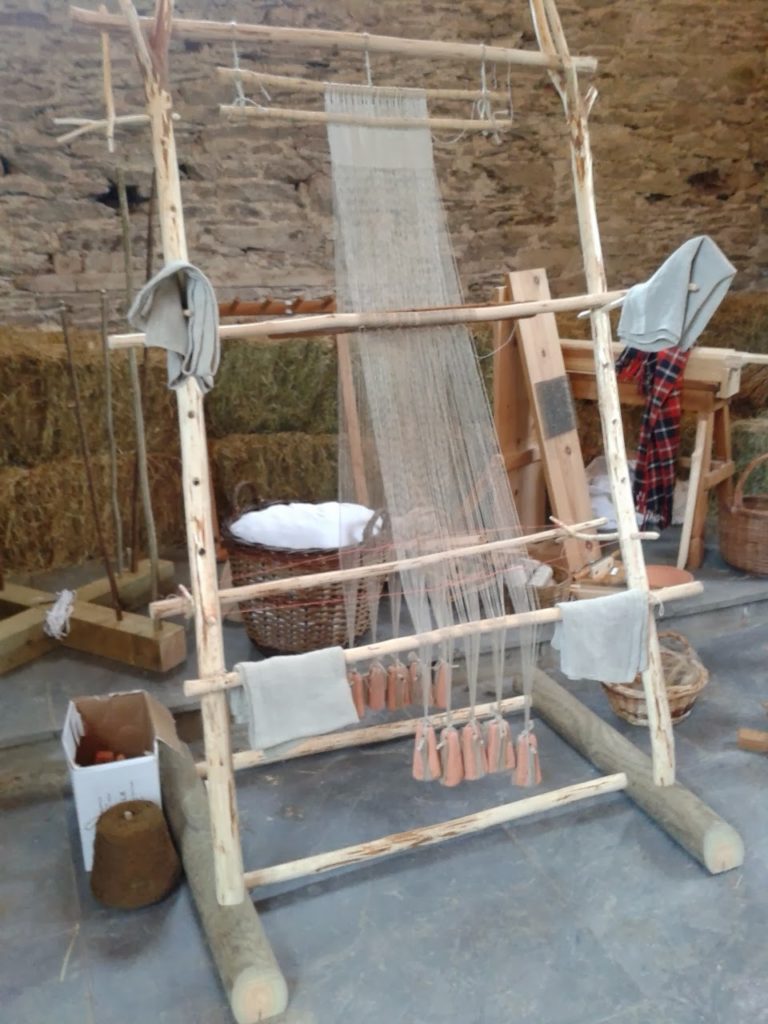
Loom weights survive in the murky depths of lakes in Switzerland, scattered around the waterlogged remains of collapsed lakeside villages. We have found from archaeological excavation that these are the settlements of the earliest farmers in the region. These are Neolithic farmers, or new stone-age farmers. Because of their existence, we know that the warp-weighted loom has been around for even longer than the weavers depicted on Bronze Age Grecian vases. Since 3000 years BC or more people have been stringing up their looms, weighting threads with loom weights.
Fragments of linen cloth have been dredged up from the Swiss lake silts, soggy and dark brown, but revealing quite complex weaving techniques. We’ve been that clever for that long.
Setting Up the Warp
So here we were. A bunch of people (workshop attendees) with nowhere near the skill and knowledge of those Swiss lakeside people living thousands of years ago. We made lumpy flax yarn and were clueless as to how to set this loom up.
Under instruction, we began by measuring out the warps on a warping board. It certainly needed instruction as it isn’t immediately intuitive. Once completed, though, it’s easy to see why you would do this. The fibres needed for weaving a sizeable length of cloth are long, and they need to be organized before making it to the loom. Otherwise, you’re likely to end up with a tangled mess.
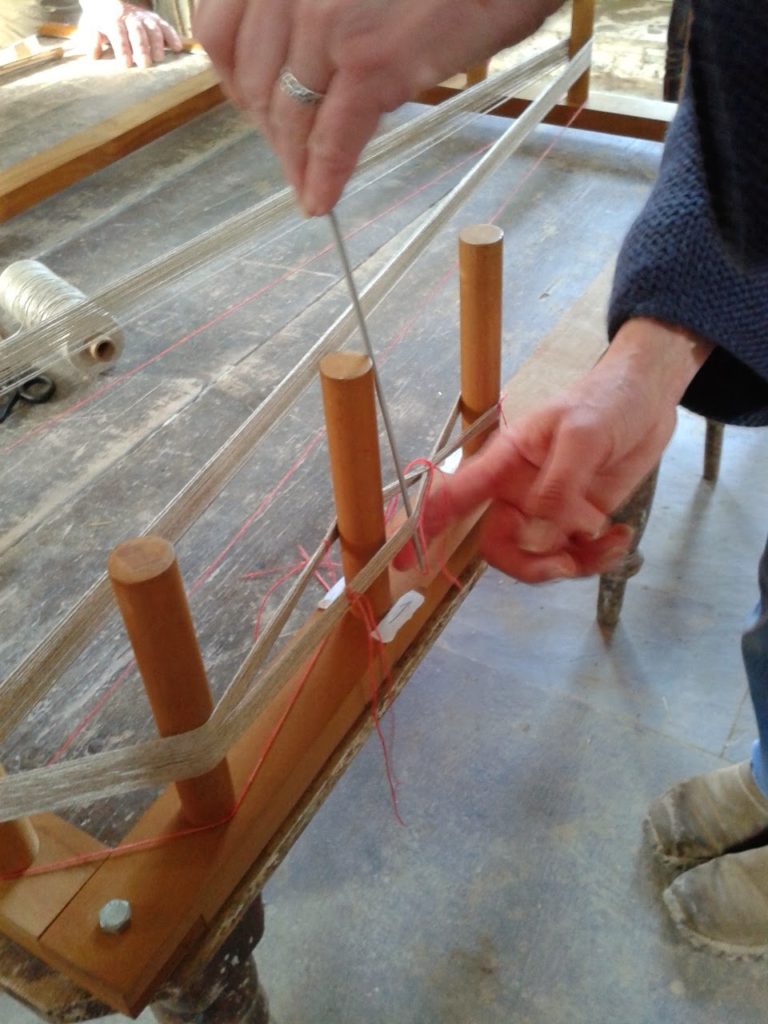
Loom Weights of all Shapes and Sizes
Then we hung the warp on the loom, onto which loom weights were attached. We were using hand-made replicas of Minoan clay loom weights, made by Shirley.
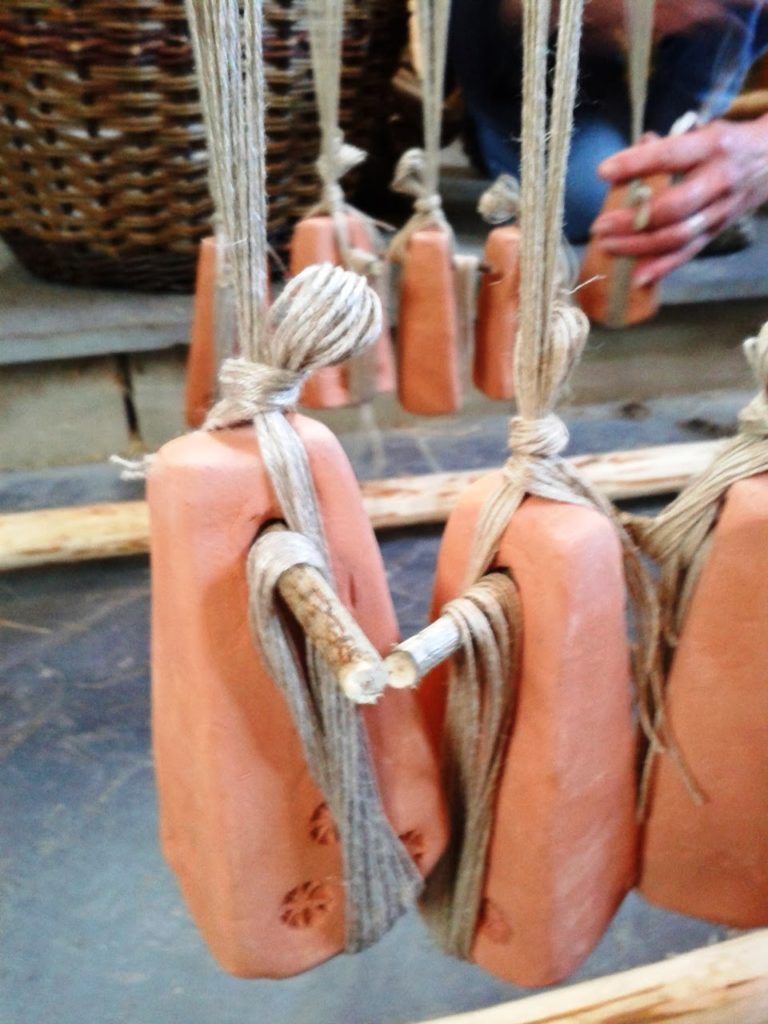
This pyramidal style of loom weight has been found all over Europe throughout prehistory. Locally we have found a similar pyramidal style (amongst other shapes) from a Late Bronze Age settlement at Huntsman’s Quarry, Kemerton, Worcestershire.
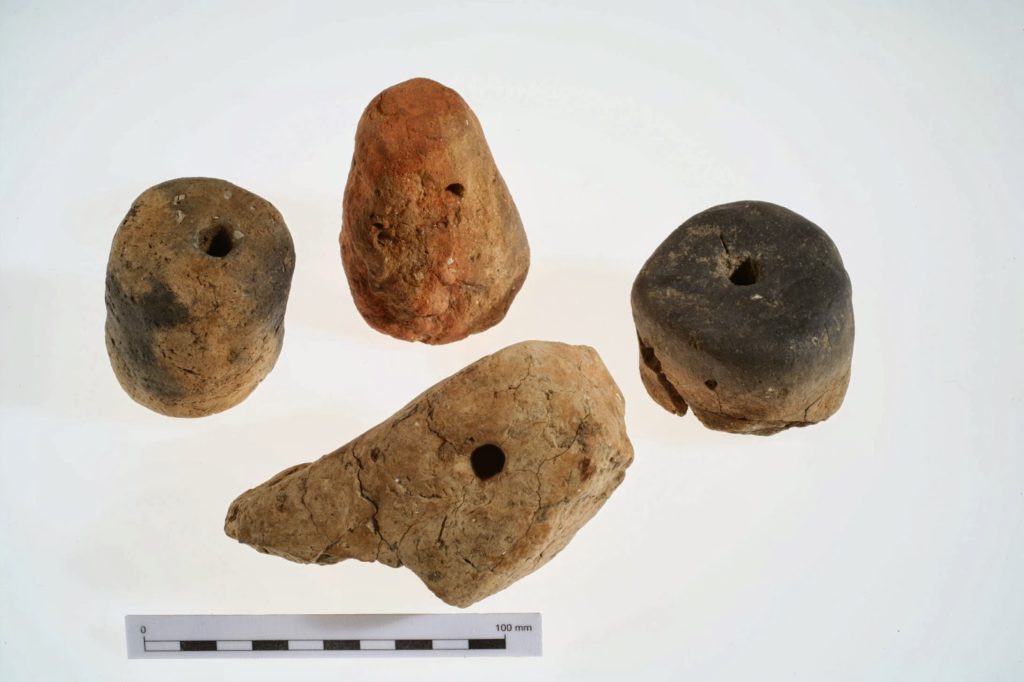
Sometimes we find large loom weights found on excavations: donut shaped and made of stone. Clearly, it was horses for courses. Were the loom weights chosen according to the project? Or, was the type of material to hand more important?
I haven’t described the whole process here, but Rolf Verberg provides downloadable instructions in You too can warp and weave on a Warp-Weighted Loom.
Final Steps
Tying on the weights and leash strings to a heddle bar was a fiddly job, but finally we got there. We had practised weaving on a loom set up the previous day, and now had our second loom set up, having learnt the steps along the way. And, here’s some of our weaving – a little wonky at the edges, but not bad for a first group effort:

It seemed to take some work to set up the loom, but once we had set the warp up, we had completed half our work. Weaving in the weft completes the job.
I think it is quite an attractive piece of equipment. A rustic piece, like the loom above, should be fairly simple to make from small poles of wood. I’m waiting to have the space to set one up. Meanwhile, I’m eyeing up a scrubby, abandoned plot next to an allotment for materials. Hmmm, I could prune that tree there to make a heddle bar and a cloth beam. The willow is getting a bit out of control. Surely a prune wouldn’t go amiss?
After a wet weekend, I woke on the Monday morning to a bright sunny day at Old Chapel Farm, and took the scenic route home.
A weekend immersed in an ancient craft has had me thinking. Industrially-made clothes, from synthetic fibres fill our wardrobes these days. But with a growing guilt about plastic microfibres escaping from clothes in our washing machines, perhaps linen will see a renaissance? We could revive traditional knowledge, with linen clothes, canvas, tarps and sacks gaining new respect.

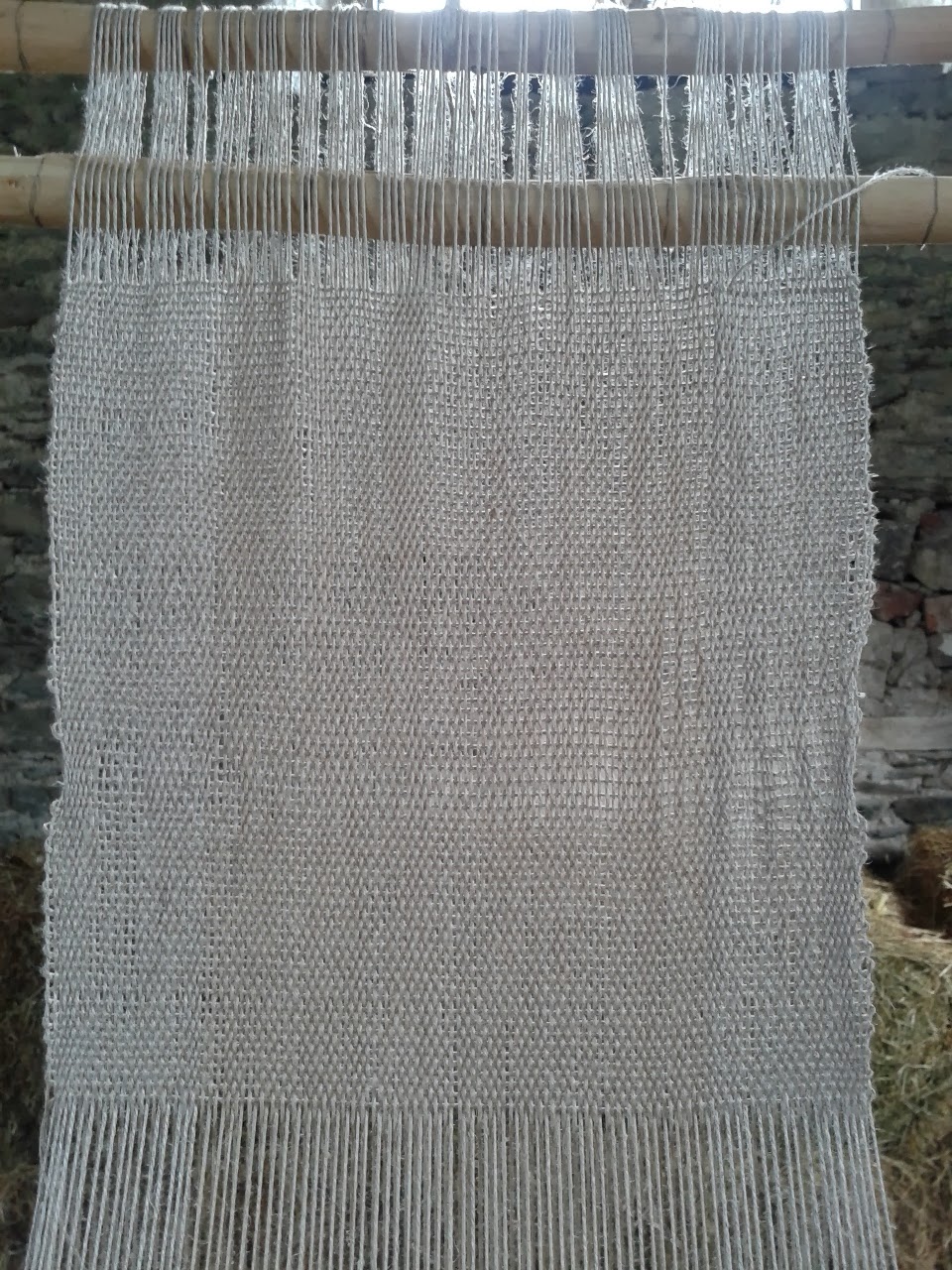

Beautiful weaving! Lovely post about flax! Thanks!
Thanks Cyndy, glad you liked it. There will be more on this when I get back to the flax processing (with a little weaving, I hope) with our local Young Archaeologists Club. In the spring, I think…..
Great post! I do love your loom, much nicer than the one I diy'd with PVC :P, which is probably about half the size of this loom. I am still a novice at most weaving methods. I am a bit curious about your lease sticks, that maintain the cross… If you'd like to share, and it matters to the loom, fiber, or weaving, how far apart are they? Thanks again for sharing your experience!
Hi Julie, I hope I've interpreted your question correctly. This is from memory, as the loom shown in the post wasn't mine, but I think the two leash sticks (upper and lower, holding the warp cross apart at the top of the loom) were about 4″ or 10cm apart. I hope that helps, and glad you liked the post.